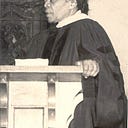History 101: Madam CJ Walker
In this series, History 101, we’ll explore some of the topics and questions we frequently discuss at the Charlotte Hawkins Brown Museum.
The new Netflix limited series “Self Made: Inspired by the Life of Madam CJ Walker” has drawn focus to a remarkable woman in history who is recorded as the first female self-made millionaire in America in the Guinness Book of World Records. Many critics have criticized Netflix for turning Walker’s biography into a dramatic soap opera. It can be considered a job well done, however, if it motivates people to learn more about this complex and dynamic historical figure.
Who was Madam CJ Walker?
Madam CJ Walker was born Sarah Breedlove in 1867 on a cotton plantation in Louisiana. Her parents, Owen and Minerva, were recently freed slaves, and Sarah was the first in her family to be free-born. Orphaned by age 7 and married by age 14, Sarah would spend the first years of her life moving around to find a place to call home. By the time Sarah married her third husband, Charles J. Walker in 1906, she had developed a scalp disorder and started to experiment with home remedies and store bought hair care treatments in an attempt to improve her condition.
In 1905, she was hired as a commission agent by Annie Turnbo Malone — a successful, black, hair-care product entrepreneur — and she moved to Denver, Colorado. While working for Malone, who would later become Walker’s largest rival in the hair-care industry (which is dramatically highlighted in the Netflix series), Sarah began to take what she was learning to develop her own product line. A controversy developed between Annie Malone and Sarah because Malone accused Sarah of stealing her formula, a familiar concoction of petroleum jelly and sulfur that had been in use for a hundred years.
Fortunately, Charles Walker’s prior experience in marketing and his encouragement for his wife to use the more recognizable name of “Madam CJ Walker,” the Walker Method and hair care products became well known and profitable. During the height of her career, Walker employed several thousand women as sales agents. In addition to training in hair care and sales, Walker showed other black women how to budget, build their own businesses, and encouraged them to become financially independent. As earnings continued to grow, Walker opened a factory and a beauty school in Pittsburgh. By 1910, Walker transferred her business operations to Indianapolis. The Madam C.J. Walker Manufacturing Company had become wildly successful, with profits that were the modern-day equivalent of several million dollars.
More than hair care
By 1913, Madam CJ Walker divorced her third husband Charles and she and daughter A’Lelia had taken up residency in Harlem, NY. She used much of her wealth in philanthropic endeavors and she used her notoriety to be an advocate for racial uplift. Her friends and associates included Booker T. Washington, W.E.B. Du Bois, and Mary McLeod Bethune. She founded charities that included educational scholarships and donations to homes for the elderly, the NAACP, and the National Conference on Lynching, among other organizations focused on improving the lives of African Americans. When Walker died in 1919, she left one-third of her estate to her daughter and the remainder to various charities and institutions — including $1,000 to Palmer Memorial Institute.
The monetary donation to Palmer Memorial Institute is not the only contribution that the Walker family made to the school. The connection between Dr. Charlotte Hawkins Brown and the Walkers remained so strong that Brown admitted Madam CJ Walker’s great-granddaughter, A’Lelia Perry into the academic program at Palmer in the 1940s.
